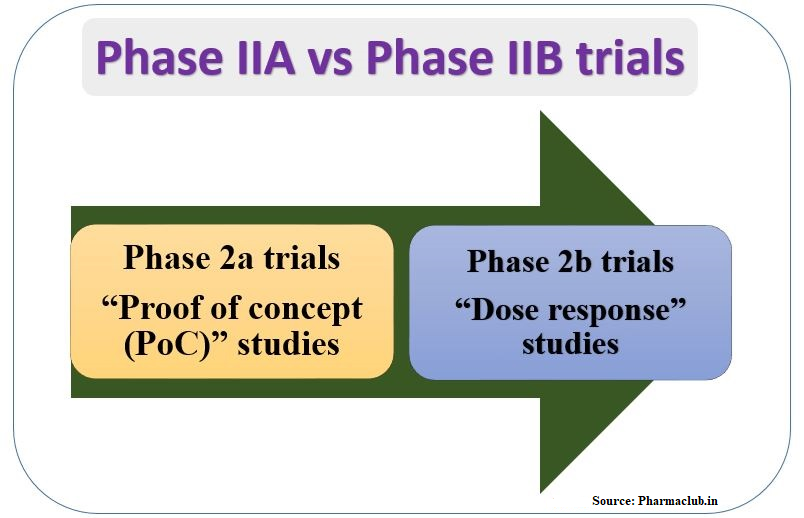Phase 2a vs Phase 2b trials:
Comparison of phase 2a vs phase 2b trials explained here. Phase 2 trials also known as therapeutic exploratory trials conducted in 100 to 300 patients approximately. As you already know, It explores the drug/device efficacy and evaluates the further safety. From this phase, Investigational drug testing will be done on target disease patients with the support of safety data from phase 1 clinical trials.
Related: Phases of clinical trials – Overview
Phase 2 trials conducted in well designed patient population with target disease. Sometimes phase 2 trials divided into to phase 2A and phase 2B trials. Even though both phases conducted to test the drug efficacy with further safety, types of studies conducted are different for each phase. That is Phase 2A trials known as early phase 2 trials, conducted with pharmaco-dynamics and clinical efficacy as primary end point. These are the non-pivotal pilot studies to know the drug mechanism of action and how the drug affecting the body to show the efficacy. Phase 2B trails known as late phase 2 trials conducted to test the drug efficacy.
Related: Job opportunities after M pham pharmacology & Pharma D
Phase 2a trials:
Phase 2a trails are critical and most important trials in clinical development of a new drug. Because important decisions taken here for proceeding the further drug development. Proof of concept (PoC) studies done here. No efficacy data is not available in humans till this trails. Most of the drugs, efficacy wise perform well in animals and in non-clinical models but fail to show efficacy in the humans. So Phase 2a trials are critical. Usually Proof of concept studies conducted with two treatment groups, one group with test drug other group with placebo. First of all new drug is tested with a dose of Maximal tolerated dose (MTD) or a dose a bit lower than the MTD. The selected dose in this phase is as high as possible up to MTD, because to know the best possible efficacy. If the drug showing promising efficacy in humans with target disease, based on this proven concept, further trials will be conducted. If no promising effect observed in this trial, sponsor may stop the investments and man force for this drug tested drug. Further trials will be stopped. (Phase 2a vs Phase 2b trials continuation…)

Phase 2a vs Phase 2b clinical trials
Related: Download free clinical pharmacology books
Phase 2b trials:
Based on proven efficacy from the early phase 2 trials, phase 2b trials conducted. Dose ranging studies starts here. Now they know the efficacy of a new drug at high dose but they do not the efficacy of other doses that are lower than the actual effect produced dose. So dose response studies conducted in this phase. Now the question is, which doses should be selected as test doses other than actual effect produced dose (MTD).
Different methods used to select the test doses like equal dose phasing or log dose spacing or using Fibonacci series or by other suggested approaches etc. For example effect produced high dose in phase 2a trial is 900mg. By using equal dose spacing method, calculated medium and low dose will be 600 mg and 300 mg respectively. If we use log dose spacing for high dose 900 mg we will get medium and low dose as 600 mg and 100 mg respectively. In groups new drug doses tested with placebo group. Along with these methods some other approaches are also used.
Simply we can say that phase 2a trials mainly all about proof of concept studies with Maximal tolerated dose (MTD) or a little bit lower dose. Phase 2b all about dose ranging or dose response studies with selected doses as explained above.
Related: Mnemonics for DMARDS classification
If you like this post, please share to your friends and feel free to drop a comment below.